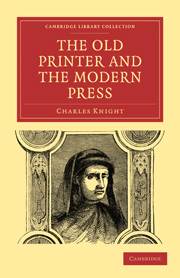Summary
The “most dear” Duke of Burgundy, with whom Caxton was appointed to negotiate in 1464, was Philip, surnamed the Good. He was a wise and peaceful prince, and honourably earned his title. We know not whether Caxton was in immediate attendance upon the court of Philip from the commencement of his mission until the death of the duke in 1467; but the evidence is subsequently clear that he was about the court in some office of trust after the succession to the dukedom of the eldest son of Philip, the Count of Charolois. The character of this prince was entirely opposed to that of his father; and he acquired the name of Charles le Téméraire, or the Rash. This fiery prince, whose influence in that warlike age was perhaps greater than the benignant power of his father, was not likely to have looked very favourably upon an envoy from Edward of England: for he was allied by blood on his mother's side to the house of Lancaster, and was consequently opposed to the fortunes of the house of York. The court of Burgundy was the resort of many of the adherents of that unhappy house, who had fled from England after many a vain struggle with the triumphant Edward. These fugitives are described by Comines “as young gentlemen whose fathers had been slain in England, whom the Duke of Burgundy had generously entertained as his relations of the house of Lancaster.”
- Type
- Chapter
- Information
- The Old Printer and the Modern Press , pp. 62 - 84Publisher: Cambridge University PressPrint publication year: 2010First published in: 1854

